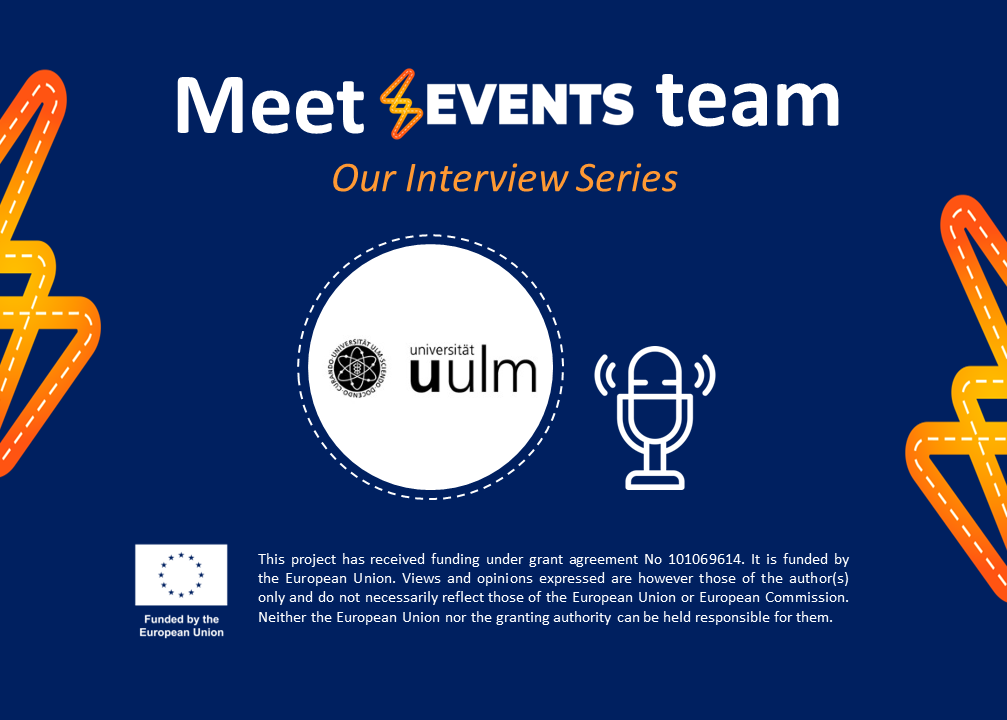
Meet Ulm University – Institute of Measurement, Control, and Microtechnology
Ulm University (UULM) enjoys an excellent reputation for its innovative research, its interdisciplinary education, and its successful teaching. In recent years, UULM has been consistently well ranked by Times Higher Education in the world and among in Germany.
In addition to other methodological and application-oriented research topics, the Institute of Measurement, Control, and Microtechnology has been researching on Automated and Connected Driving and ADAS for more than 20 years. The methods developed at UULM within several national and European projects are tested in real traffic using their own test vehicles and, for connected driving, on a pilot site with intelligent infrastructure at an intersection in a suburban area of Ulm, Germany.
UULM in EVENTS: What is your role and involvement in the project?
In EVENTS, we focus mainly on developing self-assessment methods for the onboard perception system of our connected and automated vehicle. In addition, we are investigating how we can incorporate the calculated self-assessment measures of the perception system into behavioral decision-making and, thus, into the whole planning of the vehicle trajectory. We aim to demonstrate these key points in a scenario at our infrastructure sensor-equipped intersection in UULM.
In this context, we are also leading an EVENTS project task on augmented perception by V2X data, where we use our experience and knowledge in infrastructure-based support of automated vehicles to enhance onboard perception.
What is the main challenge in developing self-assessment techniques for automated vehicles?
Imaging you have two conflicting opinions and not additional knowledge, then you do not know whom to trust. This means that for applying self-assessment methods in such a case, redundant information must be available, ideally from more than two sources. Thus, we also investigate on V2X data in addition to the onboard sensor systems. In addition, precise modeling of the properties and assumptions of the perception system is crucial for a reliable self-assessment.
Can you give us a simple example of what your methods are assessing in detail?
An important module of the perception system is the tracking of objects in the vehicle’s surroundings over time. Typically, these algorithms highly rely on assumptions like the uncertainty of the object detector that delivers the inputs for the tracking. If these assumptions are violated during operation, the tracking might highly overestimate its own confidence, which can lead to wrong decision making afterwards. Thus, our self-assessment aims to check the validity of such assumptions and possible even adapt the tracking parameters accordingly to allow for a reliable operation of the perception system in all situations.
What do you think are the future perspectives of self-assessment in the field of Cooperative Connected and Automated Mobility (CCAM)?
Self-assessing all modules and components in a connected and automated driving system, starting with the perception modules, is especially crucial to making automated driving safer and more reliable. Thus, it will be an important aspect to make CCAM systems ready for the market. We believe that such self-assessment methods will also increase the trust and acceptance of people towards a highly automated world in the future.
Anything else you would like to mention or highlight?
We are proud and grateful to be a partner within the EVENTS project. Particularly, working with all the motivated and experienced partners in a productive atmosphere, all aiming to make a step towards more reliable automated driving, is highly valuable for us.
UULM team



